Eileen Gray. Timeless design prodigy.
Kathleen Eileen Gray‘s background led her to be The Reference. An almost century-old globetrotter whose imprint on design and architecture is everlasting.
From her painter father, this Irish woman born on August 9, 1878, inherited her passion for travel and love of the arts.
Thanks to her mother, and her Scottish nobility title, she accessed the most select social and artistic circles.
In 1901 she met (Charles Rennie) Mackintosh at Paris Universal Exposition, where she was impressed by Art Nouveau, and of course, his Arts & Crafts.

Eileen Gray is one of the lesser known but most important architects of the 20th century. She grew up in the Victorian era, the “belle époque“, within an aristocratic circle. She had a traditional academic training in Berlin, France and England.
From 1901 to 1906 she studied at London Slade Scholl of Fine Arts, the École Calarossi, the Julian Academy and École des Beaux-Arts in Paris.
She settled in the apartment that she would occupy for the rest of her life, located near Saint Germain des Près, in the “city of light“. Here began her transition towards modernity and vangard.
She traveled to Africa to learn the technique of making rugs from the best Moroccan artisans. This would be followed by her trip to America, and once back in the old continent, she would become an ambulance driver during the First World War.
A great admirer of Asian lacquer work, she met the Japanese master Sougarawa in Paris, who accompanied her to London, during the Great War, to open her first workshop and produce design furniture in Chelsea.
«To create something, one must first question everything»
Eileen Gray drew on the places she traveled to, and appropriated the craft technique of Japenese lacquer. She transformed and updated it, making it a contemporary working method that would give rise to part of his most precious works.
She was the first woman to be recognized as European Artist of the 20th Century for applying Asian lacquer techniques in design and prompted her to open her Gallery, Jean Desert, using a gentelman name.
Gray was a revolutionary, one of the founders of the Union des Artistes Modernes (UAM), just as the Group Le Batignolles did at the end of the 19th century with the “Union des artistes paintres, sculpteures…”
Trying to stay apart from her contemporaries, this Anglo-Irish emigrant was an artist influenced by Gustav Klimt and Otto Wagner, captivated by The Stijl and the Bauhaus, drawn to sobriety and simplicity, as well as low cost hand-made production.
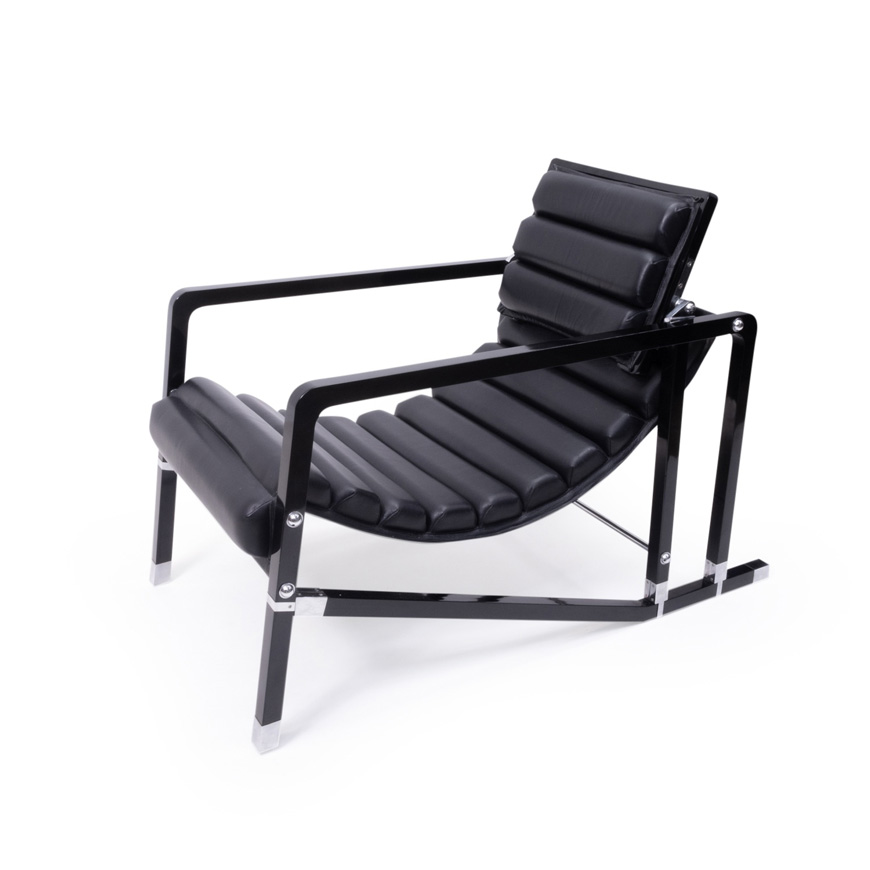
While she tried to go unnoticed, the innovation and beauty of her works exposed her to the public and forced her to design for the elite.
In the age of isms, Paris was reborn after First World War and with it the Art Deco, for which the works of Eileen Gray were the icing on the cake.
Gray was an integral designer, she had a global vision of her works. The space houses the furniture but at the same time they configure it. That is why her architectural projects are nourished by the furniture she designed and vice versa.
Integral reform of the Rue de Lota apartment.
It was her first major project, commissioned by her patron Madame Mathieu-Levy, a hat designer at the J. Suzanne Talbot boutique. She began its transformation in 1919 and dedicated more than four years to it.
Not being able to eliminate the walls and partitions of the house, she decided to cover them with black lacquered block screens, which totally transformed the space access, combining sculpture, architecture and furniture.
Brick Screen, and her love for lacquer.
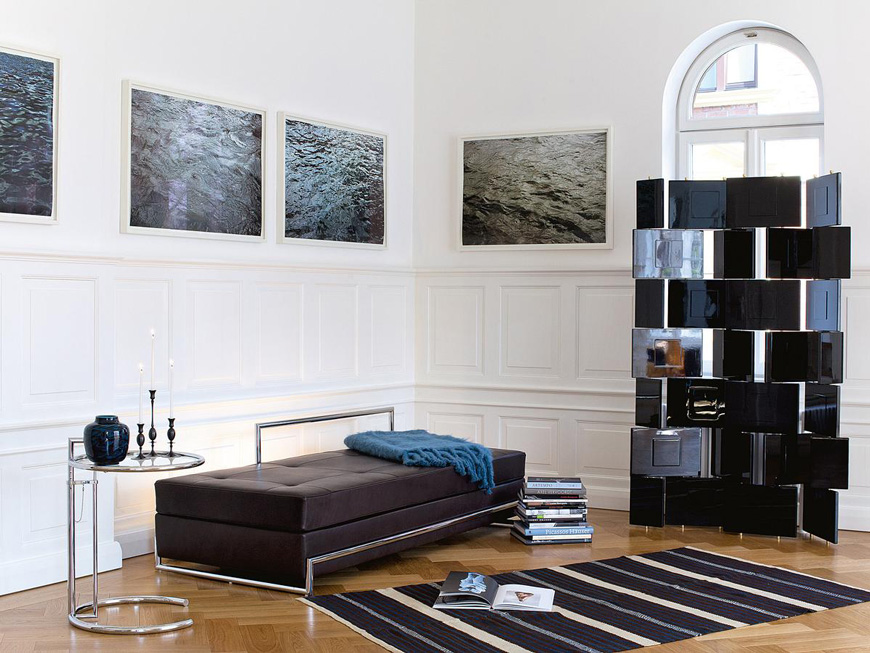
Although this screen was designed in 1925, it coincides with the screens on Rue de Lota and is an example of her work with lacquer.
She experimented with different sizes of blocks until she reached the one that would make up this marvelous sculpture, present in the permanent collection of MoMA in New York.
It consists of twenty-eight fixed and mobile panels painted by hand, dried and sanded, one after another, until an impeccable result is obtained. They are supported on a stainless steel structure by unions made of brass.
The delicacy, refinement, austerity and simplicity of the artist are evident in this wonderful work of art, the Brick Screen room divider by Eileen Gray.
Currently in the ClassiCon catalogue, there is a limited edition of 75 parabanes in which each piece is numbered and signed.
Dragons Armchair, the only one.
An armchair that took ergonomics into account before the arrival of the Bauhaus. It was auctioned by Christies for almost €23 million in 2009.
It is a work from 1919 that defines the designer’s first stage. It shows her inventiveness, subtlety, delicacy and good work with low relief, lacquer and tapestry.
An armchair designed exclusively for Lota’s Apartment and which later passed through the home of Yves Saint Laurent, until it reached its unknown current owner.
Bibendum armchair, and its touch of humor.
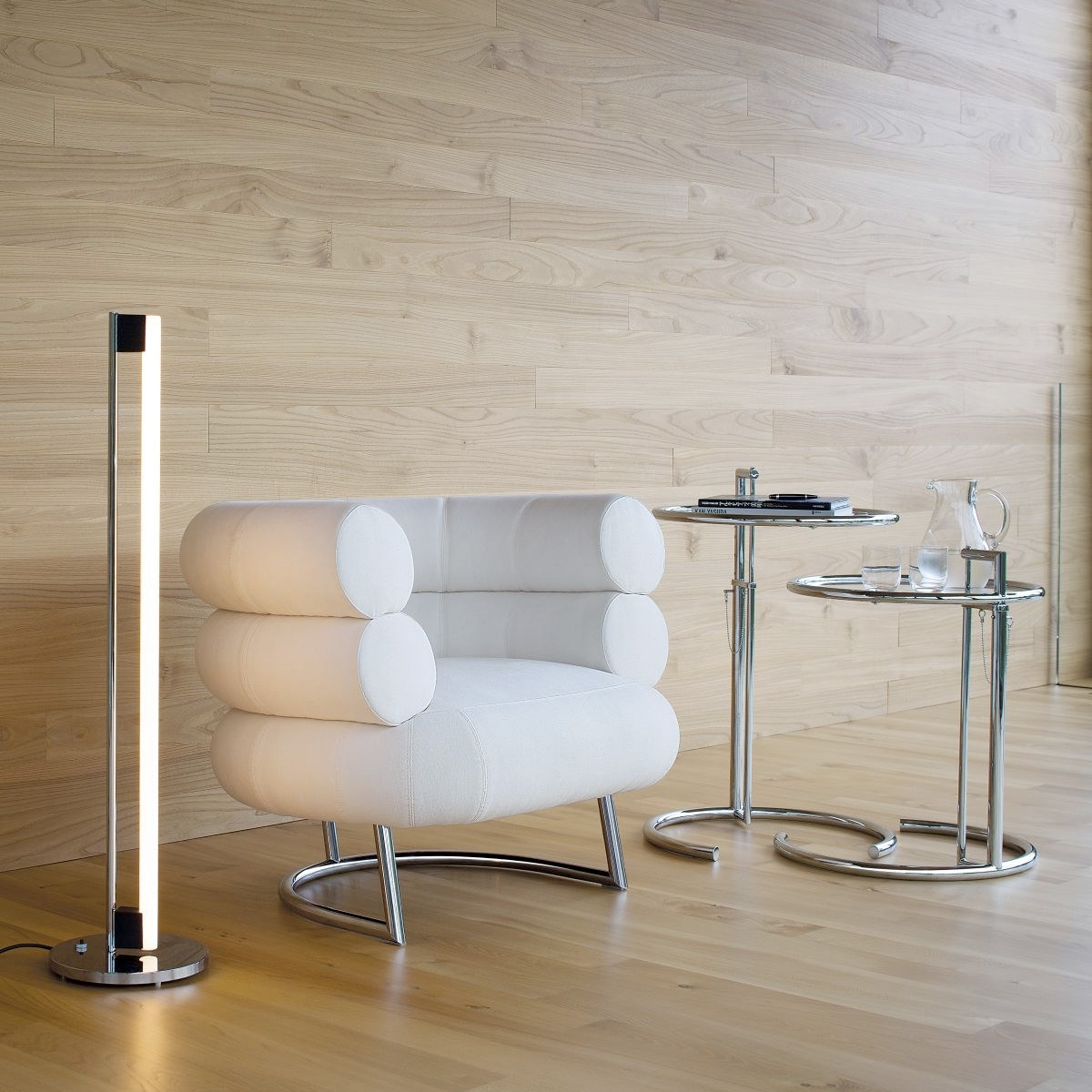
Edited by ClassiCon and designed in 1926, the Bibendum armchair is inspired by the Michelin Man, created almost 30 years earlier.
An almost hundred-year-old armchair, exhibited at the MoMA in New York, captivating despite its proportions and minimalist aesthetics, a surprising timeless piece for its time.
House E 1027, desecrated and saved by the same man.
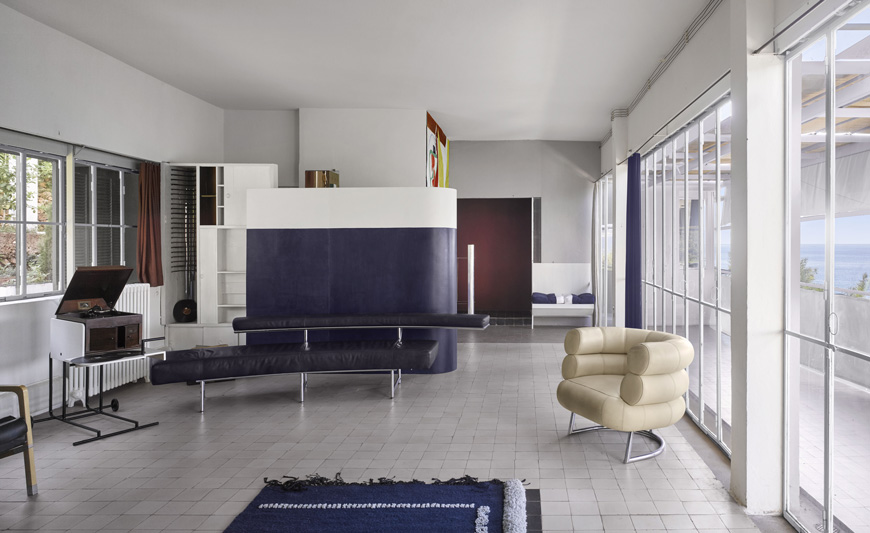
There is no doubt that Eileen Gray was a visionary, a woman ahead of her time.
Her home on the rocks almost touching the Mediterranean and overlooking the Bay of Monaco, marked many of the principles that would later govern modern architecture.
Her then partner Jean Badovici encouraged her to finish her architecture studies. She started the design of her summer residence E 1027, in Roquebrune-Cap-Martin in 1926 and ended in 1934.
Research, innovation, skill, search for functionality and delicacy, define this work, that of an artist who would reclame herself through her creations.
The house, whose floor plan is L-shaped, interacts and is nourished by its environment. She studied the wind as well as the angles of the sun throughout all seasons, to get the most out of it.
She built it on a pile structure, set on three levels on the rocky ground, and which was constantly evolving due to its relationship with the sun, the wind and the sea.
The access, which flows through to the walkways, leads us to a simple and efficient house, in which the uses are mixed, giving rise to open and multipurpose spaces, opened to the outside through large windows —from floor to ceiling—, and where the sheets of the glass enclosures fold and are mobile.
Even the kitchen is revolutionary, since the interior home extends to the exterior, to enjoy the surroundings and the wonderful Mediterranean climate.
The staircase, of divine proportions, connects the different floors with concrete steps. It is illuminated by a light from above that comes from a skylight that protrudes from this boat that floats in the landscape.
Quite an innovation, the “maison minimum” is a living organism, whose name corresponds to an encrypted code:
- the E for Eileen,
- the 10 for the J,
- the 2 for the B and
- the 7 for the G of Gray…
… making his partner Jean Badovici participate in her designs.
Eileen Gray jointly defined the container and the content, the furniture was also the premise of the project and this led to furniture that folded and ran along the walls and the rest of the house, favoring a better flow.
Table E 1027, the versatility of her objects.
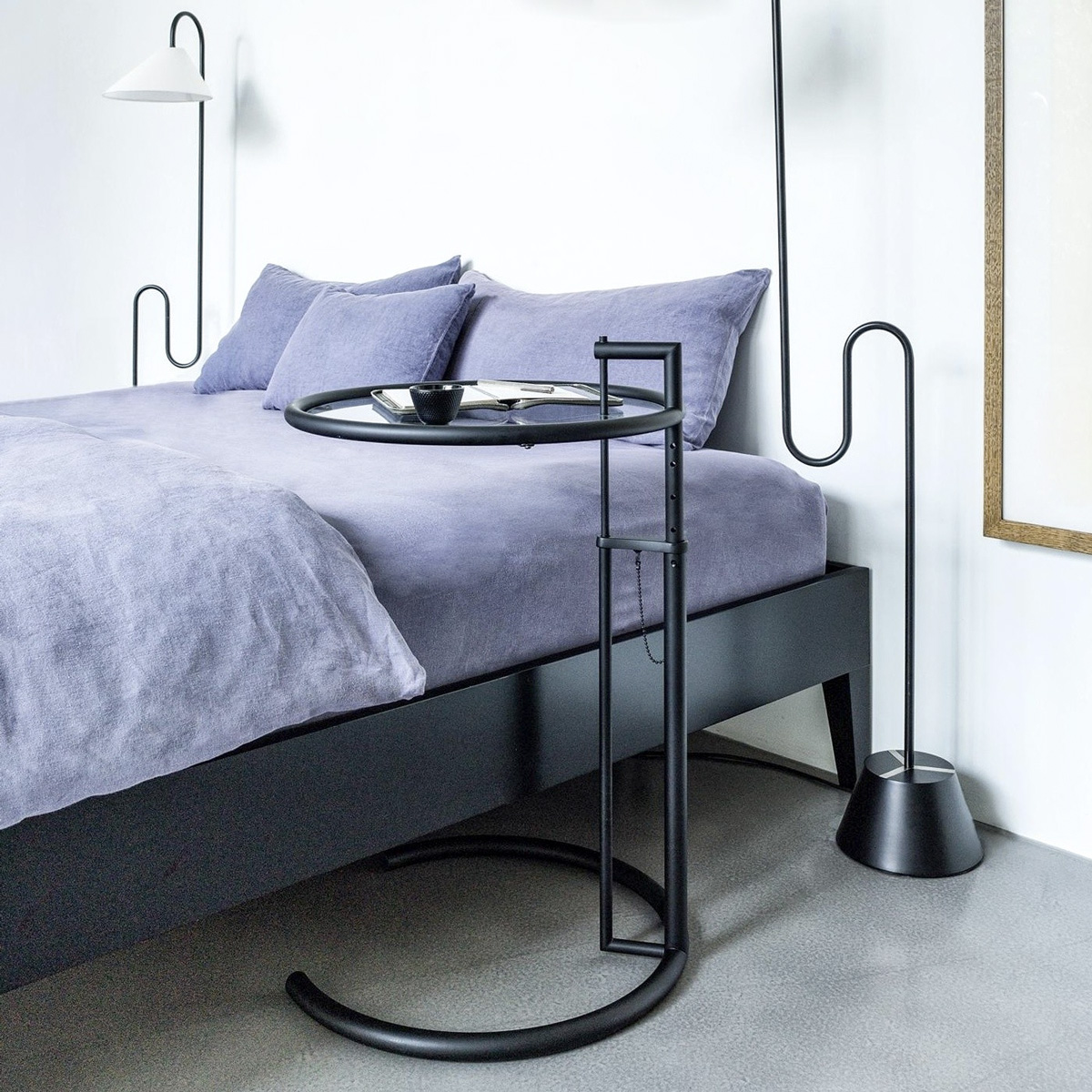
Another masterful piece by the architect and designer. An icon exhibited at MoMA.
Her goal in creating the E 1027 side table was to answer the need of his sister: she liked to have breakfast in bed.
Eileen Gray conceived this cabinet with a height-adjustable tubular steel frame and originally with a Plexiglas top, which is also portable.
Bonaparte armchair, always Paris.
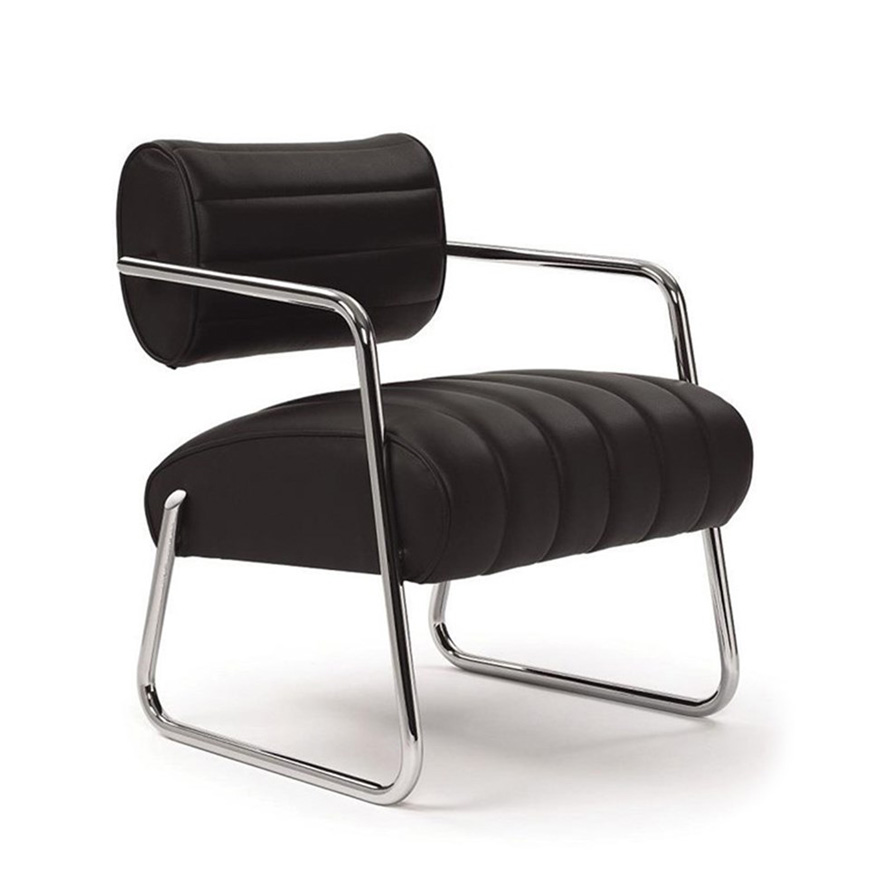
Although she designed it in 1935 for her Paris apartment, whose Rue gives it its name, it is also part of the E 1027 residence, as the architect found it tremendously comfortable and useful.
This armchair manages to combine comfort and opulence through a light tubular structure in chromed steel, the seat combines a beech structure and upholstery in polyurethane with polyester fiber.
Edited by ClassiCon, the original upholstery was black leather but it is now available in different fabrics and colours.
Stool No 2, unconventional.
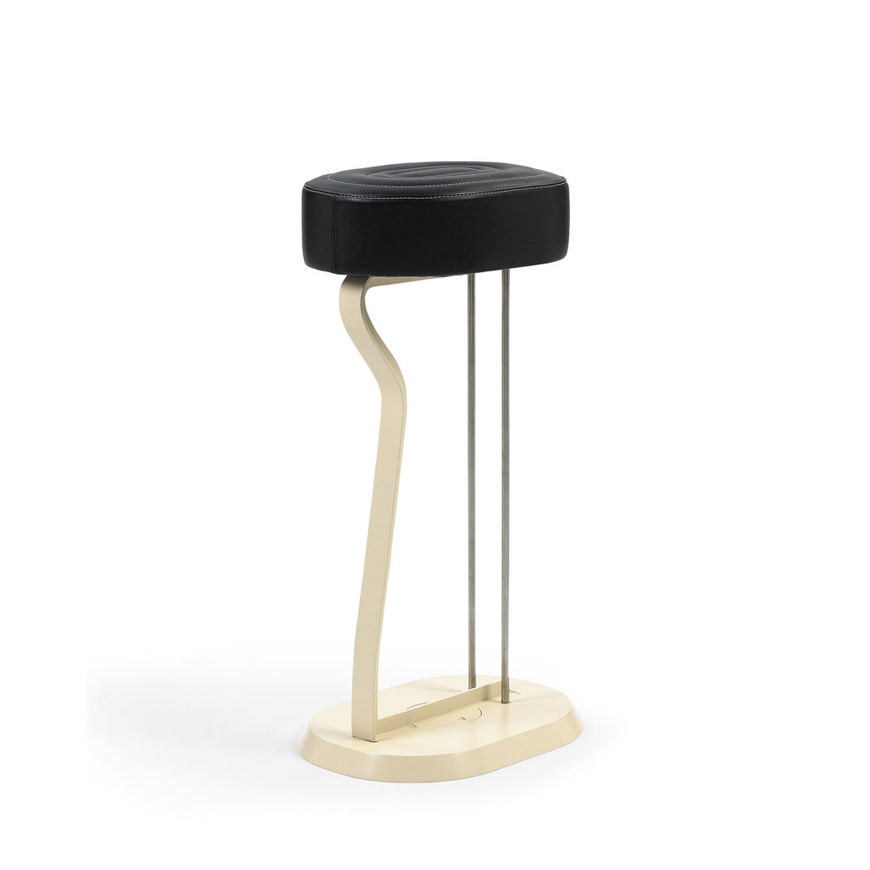
Designed in 1927 for Cap-Martin, its structure shows the rigidity of the two steel rods as opposed to the fluidity of the organically shaped steel plate. Both arise from a lacquered base in the same colour, ending in a comfortable seat.
Centimeter carpet, always creating.
100% natural wool tapestry. Like the rest of her creations, it was personalized for the space that housed it. It is also a nod to Jean Badovici with the number 10. In addition to comforting us and bringing warmth, we will not have to be desperately looking for a meter or a ruler when we are designing.
Two titans of modern architecture.
Today it is easy to understand Le Corbusier‘s admiration and bewilderment front such a genius: Eileen Gray, an architect, designer and artist whose ideas flowed endlessly, just like her works.
When they met, the creator of the famous “Modulor” was still starting his career. He was captivated by this woman who did not stop producing and dismayed that he was not, yet, at her level.
They welcomed him into the house E 1027, feeding his spirit and mind. He appropriated the work of Eileen Gray, a woman who did not care about the limelight. Le Corbusier painted eight murals on the white walls of the house to feed his ego… and he didn’t even ask Eileen for permission. Those same murals were to blame for the fact that the Irishwoman never returned to Roquebrune.
For a long time, the authorship of the house E 1027 was attributed to Le Corbusier, which saved this house, now protected in an area declared a “Modern Space” of historical and cultural importance.
The architect ended up buying a piece of land, from which he could see the residence of Eileen Gray, to build his famous “Cabanon“.
Two iconic works of modern architecture from the 20th century now coexist in peace and harmony.
Eileen Gray, in addition to being a referent for 20th century architecture and design, is also a benchmark for women’s empowerment and the LGTB movement.
A discreet woman who passed away at the age of 98, and who until her last days worked recovering and organizing her innumerable projects, the existence of which, only she knew about.

